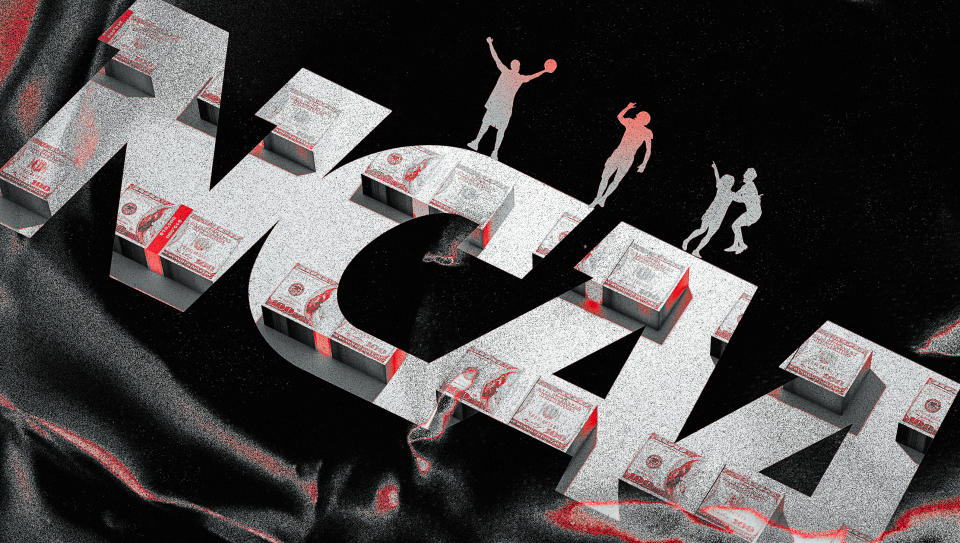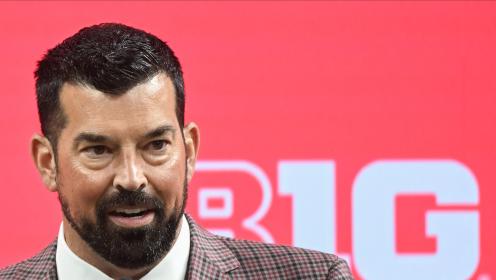INDIANAPOLIS — Dozens more scholarship spots are coming to NCAA sports.
During a meeting Tuesday, power conference commissioners finalized new roster-size limits that pave the way for athletic departments to distribute millions of dollars in new scholarships to athletes in, most notably, football, baseball and softball. Conference officials with knowledge of the figures spoke to Yahoo Sports under condition of anonymity.
As part of the new revenue-sharing model — beginning in 2025-26 academic year — by-sport scholarship restrictions are eliminated, and schools are permitted to offer scholarships to the entirety of their rosters. The new roster limit figures are not final until the approval of House settlement terms.
Football, with a current scholarship restriction of 85, will now have a roster limit of 105 — a 20-scholarship increase for those schools willing to give the maximum. In an important note for football, the 105 may not be a requirement until the start of the competitive season, giving coaches flexibility to go beyond that figure during preseason camp, for instance.
Baseball, with a current scholarship restriction of 11.7, is expected to have a roster of 34. Scholarship spots for softball and volleyball, each currently at 12, will increase to 25 and 18, respectively.
In all, more than 60 additional scholarships are available for distribution in those five sports. As they do now, schools are not required to distribute scholarships to each player. For instance, many schools are unlikely to use a full 34 scholarships for baseball, choosing instead to offer grants to only a portion of its roster and leave walk-on opportunities.
The new roster figures are expected to be included in the long-form agreement in the landmark settlement of three antitrust cases, including the House v. NCAA lawsuit. The agreement is expected to be filed Friday with details on the distribution of the $2.77 billion in back pay to former athletes as well as particulars of the new revenue-sharing model permitting schools to distribute upwards of $20-plus million annually.


The details around roster sizes of other sports — many of which will see increases in scholarship slots — are expected in the document. No sport will see a reduction in scholarship spots, according to plaintiff attorneys. As part of the agreement, roster limits must be set at or more than current scholarship restriction for each sport.
Another key change to the scholarship structure: All sports will be considered “equivalency sports,” meaning partial scholarships can be distributed to players. Football, basketball and other sports are currently considered “head-count sports,” which require players on scholarship to receive a full grant.
On Tuesday at Big Ten media days, commissioner Tony Petitti said the settlement’s expansion of scholarships gives schools “all kinds of opportunities,” which possibly includes additional women’s scholarships to balance out Title IX in a revenue-sharing model.
Many schools are preparing to increase scholarships significantly and can count as much as $2.5 million of additional scholarships toward the annual revenue sharing cap, expected to begin at or around $21.5 million. According to several power conference administrators who spoke to Yahoo Sports, programs are expecting to spend $3 million-7 million in additional scholarships each year.
For the most elite power programs, the total cost of both the scholarship additions and the sharing of revenue with athletes will exceed $30 million a year — a figure reported in a story on Yahoo in May. The annual revenue-sharing cap is expected to steadily increase to as much as $25 million in the next three years. The cap, based on an average of power school revenue streams, fluctuates as revenues increase.
To maintain compliance with the federal Title IX law, any scholarship increases in a men’s sport will likely need to be replicated in a women’s sport, driving up the additional costs. But not all programs can afford to add so many additional scholarships. Some administrators are in the process of “tiering” their sports by decreasing investment on certain programs and increasing investment in others. This includes staff and salary cuts as well as the reduction in scholarships from Olympic sports, especially those that generate little to no revenue.

